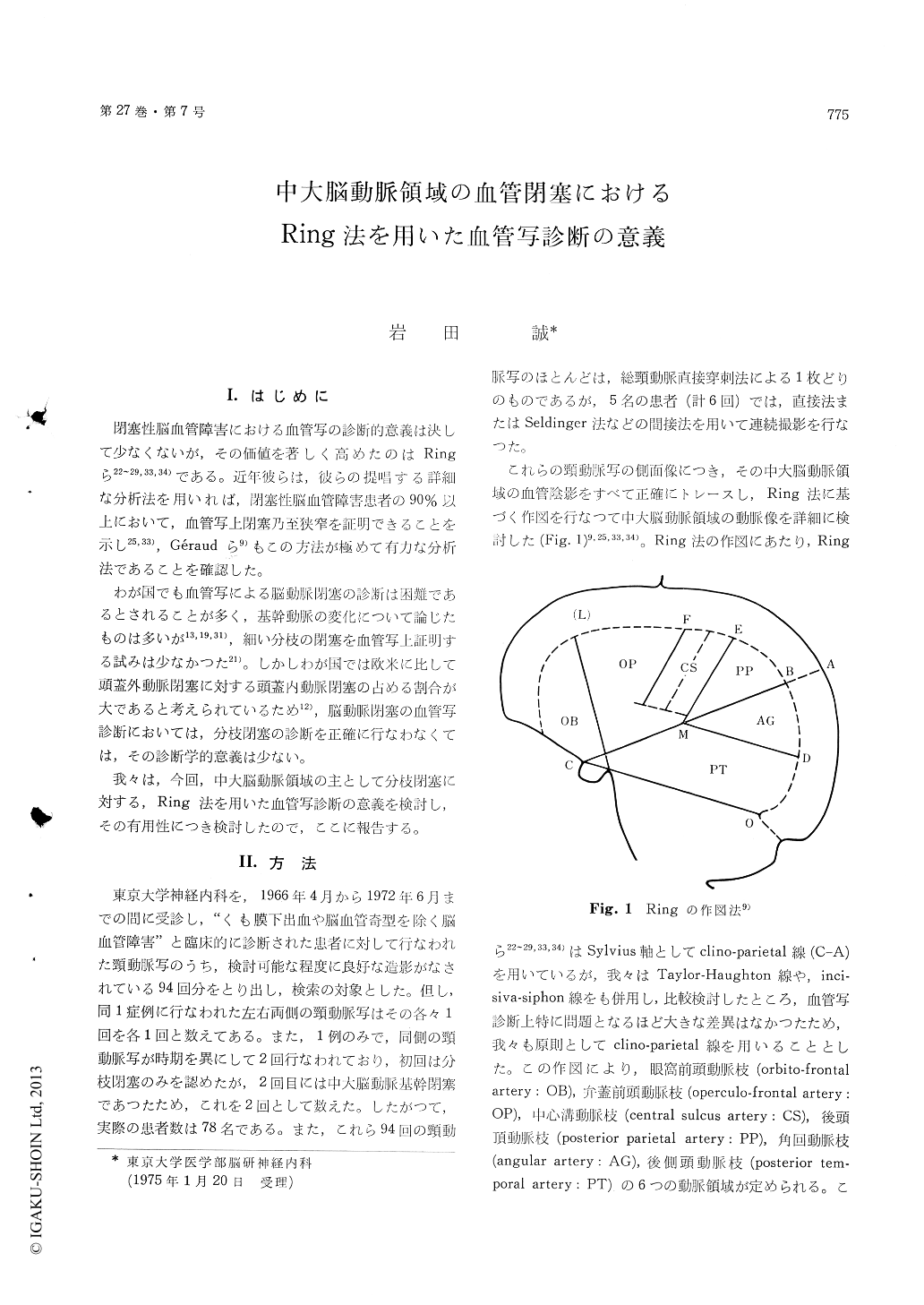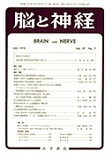Japanese
English
- 有料閲覧
- Abstract 文献概要
- 1ページ目 Look Inside
I.はじめに
閉塞性脳血管障害における血管写の診断的意義は決して少なくないが,その価値を著しく高めたのはRingら22〜29,33,34)である。近年彼らは,彼らの提唱する詳細な分析法を用いれば,閉塞性脳血管障害患者の90%以上において,血管写上閉塞乃至狭窄を証明できることを示し25,33),Géraudら9)もこの方法が極めて有力な分析法であることを確認した。
わが国でも血管写による脳動脈閉塞の診断は困難であるとされることが多く,基幹動脈の変化について論じたものは多いが13,19,31),細い分枝の閉塞を血管写上証明する試みは少なかつた21)。しかしわが国では欧米に比して頭蓋外動脈閉塞に対する頭蓋内動脈閉塞の占める割合が大であると考えられているため12),脳動脈閉塞の血管写診断においては,分枝閉塞の診断を正確に行なわなくては,その診断学的意義は少ない。
Ninety-four carotid arteriograms from the patientswith cerebro-vascular diseases were analysed withthe Ring's method in order to re-evaluate thismethod for the diagnosis of the sylvian branchocclusion. In 59 cases whose clinical diagnosis wasthe sylvian infarction, 41 cases (69%) had one ormore radiographical occlusions of this arterial terri-tory. On the contrary, percentage of the falsepositive findings, i. e., radiographically suspectedarterial occlusions without any neurological symp-toms referable to these findings was only 2.7%(1/35).
Seventy-six percent of the radiologically demon-strated arterial occlusions were those of the corticalarterial branches which were only detectable bythe Ring's method. Others were occlusions of themain arterial trunks, such as carotid occlusion (12%)or sylvian trunk occlusion (12%).
As for the sylvian branch occlusions, occlusionof the central sulcus artery was most frequentlyobserved (20 cases), then those of the operculo-frontalartery (11 cases), of the angular artery (10 cases)and of the posterior parietal artery (8 cases). Branchocclusion of the posterior temporal artery was veryrare (one case) and that of the orbito-frontal arterywas not found in our series. Furthermore, onethird of these cortical branch occlusions weremultiple arterial occlusions.
Clinico-radiological correlation was studied about32 cases with cortical branch occlusion. Twenty-five cases (78%) showed an excellent correlation.In 6 cases (19%), radiographical arterial occlusioncould only partially explain the clinical featuresof the patients whose ischemic lesions might belarger than the radiographically estimated extentof infarction. In only one case, arteriographicalocclusion had no clinico-radiological correlation. Itwas a 37-year-old female patient (case 5) showingbrachial dominant right hemiplegia without hem-ianopia which had appeared suddenly at the ageof 17. Her left carotid arteriogram was normal,on the other hand, however, her arteriogram ofthe healthy right side showed absence of the angularartery with formation of collateral circulation byposterior parietal artery.
In regard to 59 cases which were clinically di-agnosed as sylvian infarction, we analysed variousfactors influencing on the percentage of positiveradiographical arterial occlusion.
Mean age of the cases with radiologically dem-onstrable arterial occlusion was 41.9±17.9, whilethat of the radiologically negative cases was 39.9±14.4, the difference being non-significant (P>0.5).
Interval between the onset of the neurologicalsymptoms and the arteriography, and consciousnessstate at the onset were not related to the percentageof the radiographical positivity, which was corre-lated, however, to the poorer prognosis of neuro-logical deficits.

Copyright © 1975, Igaku-Shoin Ltd. All rights reserved.


